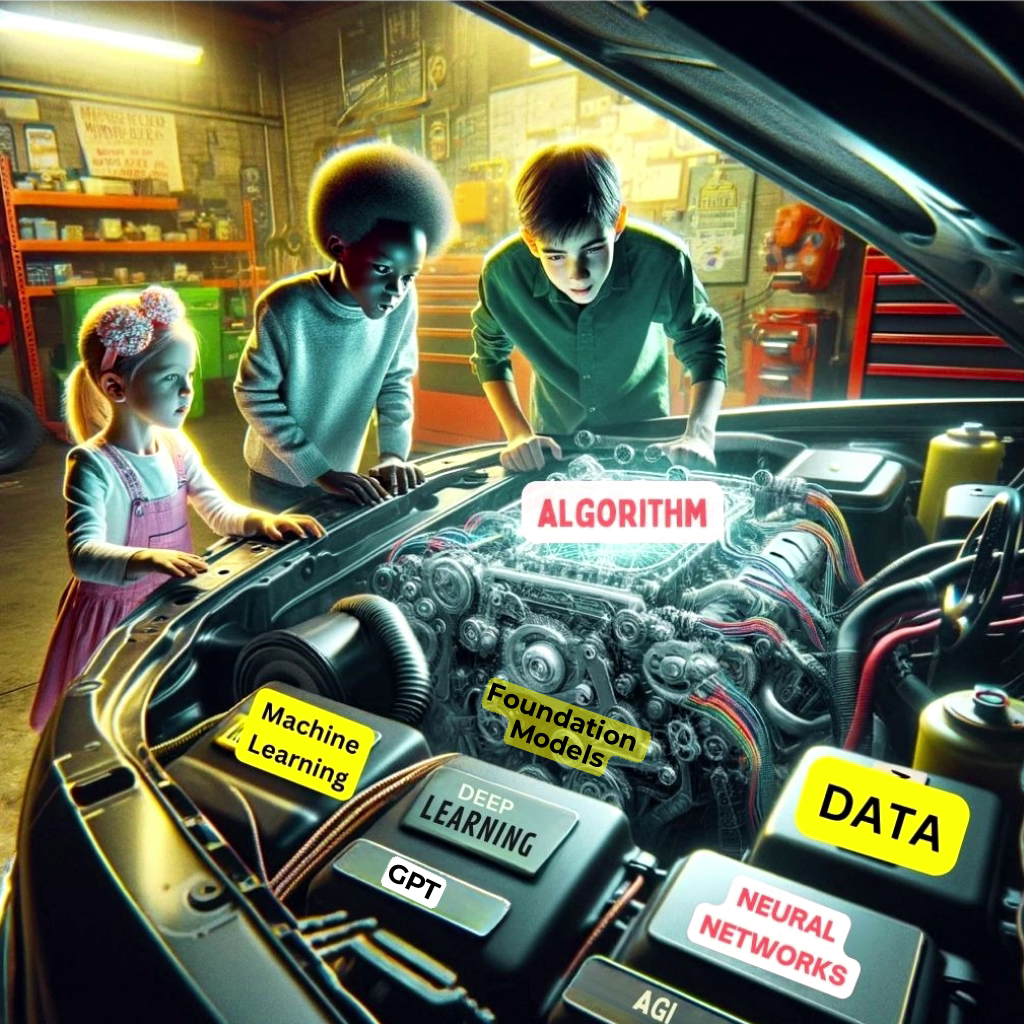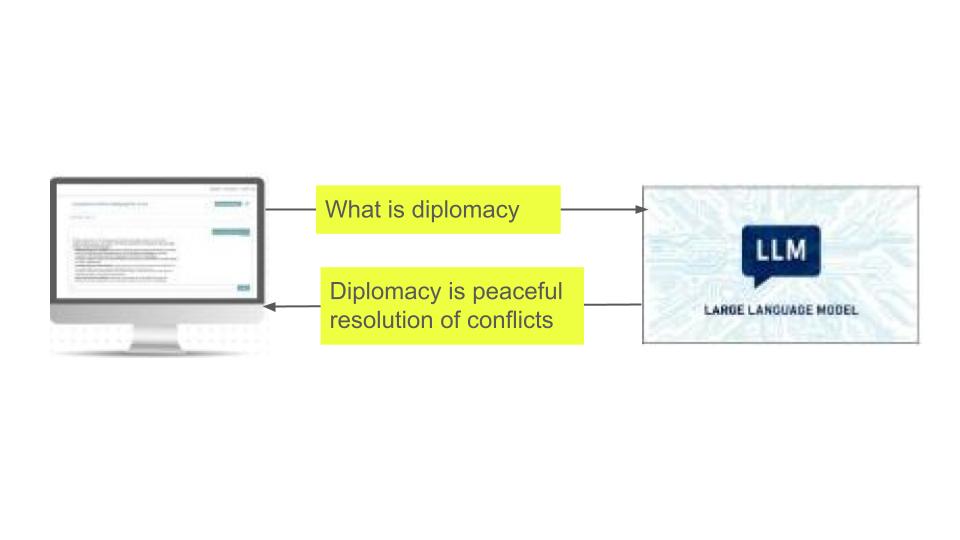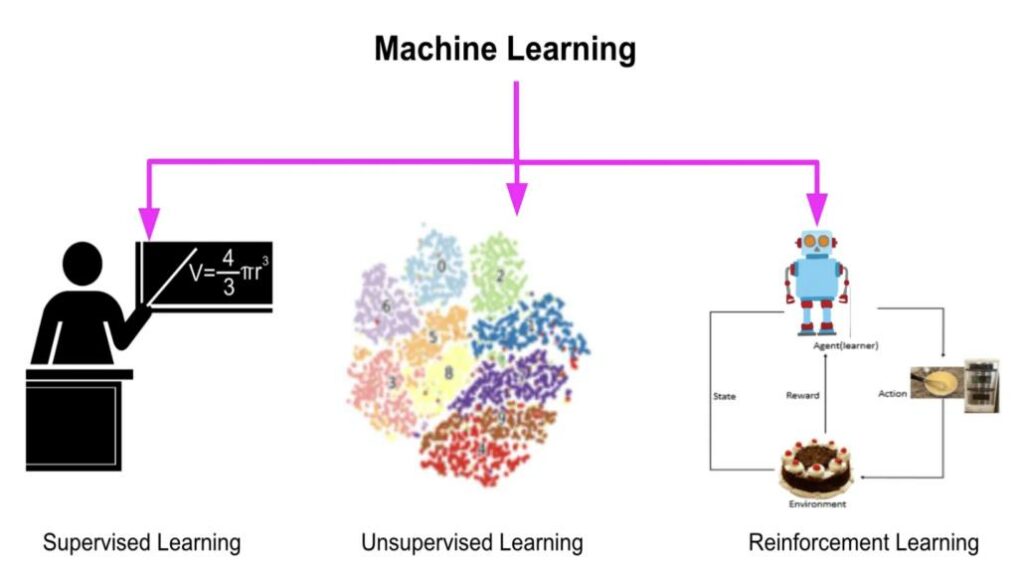
AI Apprenticeship: 10 transformative lessons from learning AI by building it

Author: Jovan Kurbalija
AI apprenticeship addresses a growing gap between the rapid advancement and slow adoption of AI technology. A 2023 Gartner survey illustrates this disconnect: while almost 80% of business leaders view AI as a priority, a mere 20% are actually using it effectively. Meanwhile, a EY study shows that 75% of Americans worry about losing their jobs to AI in the near future, and a YouGov survey finds that nearly half of Americans see AI as an existential threat.
The push for new AI laws and treaties by parliamentarians and diplomats only highlights another divide: the gap between governing AI and understanding it.

A lack of understanding of AI could lead to missed opportunities, wasted resources, and even a Luddite-style backlash.
Having spent years observing how society reacts to AI—and delivering AI training—Diplo has designed a unique AI apprenticeship model. It focuses on building practical AI skills, demystifying how AI works, and encouraging deeper reflection on its social impacts.
In the following text, you’ll discover how Diplo’s AI apprenticeship approach was shaped by research and hands-on experience through our 2024 online course, including 10 lessons learned:
Why do we use the apprenticeship approach?
AI apprenticeship pedagogy helps to grasp a mix of the deterministic and probabilistic nature of AI. AI is built by scientists and mathematicians following deterministic principles that the law of nature functions in predictable and repeatable ways. However, AI functioning is not deterministic. We experience its probabilistic nature by, for example, getting different answers to the same questions on ChatGPT in a few minutes.
Traditional teaching methods fail to capture AI’s dual—deterministic and probabilistic—nature. They tend to follow a linear path, positioning learners as passive recipients of knowledge. However, AI acts more like a learning mirror, reflecting our cognition, biases, and ideas. Engaging with AI becomes a journey of self-discovery, where learning, unlearning, and experimentation are crucial.
In order to address these teaching challenges, Diplo has been searching for a new approach based on experience in pedagogy and delivering training on AI for the last 6 years.
The result is an AI apprenticeship online course where participants learn about AI by developing AI applications. After internal testing within Diplo, the first public delivery was conducted between October and December 2024, involving 28 diplomats, academics, and business people from all continents, including Vanuatu, Kenya, Switzerland, the UK, Brazil, Venezuela, and Mexico.
How are apprenticeships run?
The course follows, in parallel, skill development, knowledge acquisition, and wisdom-nudging. These three threads are kept together around a backbone storyline of developing an AI chatbot. Technical and theoretical explanations enrich the main storyline. While engaged in real-world practice, apprentices are provided with learning ‘scaffolding’ by AI experts and supervisors. As they progress in AI learning, ‘scaffolds’ are progressively withdrawn.
Practical jump-start
The course kicks off with the apprentices starting to develop their AI applications. AI chatbots can be developed in a matter of an hour, a maximum of a day, by creating simple prompts and uploading a basic set of documents of relevance for the topics the AI application covers.
First lesson: Demystification of AI by simple and easy development of chatbots
In the 2024 course, apprentices developed AI chatbots on specific topics such as Child Safety in the Metaverse, AI and Trade Diplomacy, and All about ID, to name a few of the 22.

After a quick start, the apprentices continue fine-tuning their chatbots through an enriching set of background documents, assigning different weights to sources and adjusting prompts. They directly experience AI dynamics: one day to create the first chatbot, one month to develop a reasonably functional AI, and one year to have an AI that fully activates organisational tacit and explicit knowledge.
Second lesson: It is easy to create AI but much more difficult to develop useful and effective AI
As AI continues to evolve, its progress relies not only on technical expertise but also on non-technical factors such as logic, epistemology, and deep knowledge of the relevant domain. In this context, apprentices learn how to address a common misconception among businesses and organizations: treating AI as just another ‘software package’ instead of recognizing it as a transformative tool capable of reshaping processes and operations.
Third lesson: Invest in the non-technical aspects of AI
Here, we faced the first pedagogical challenge of how to reconcile public perceptions of ‘easy AI’ with much more demanding efforts and craftsmanship to develop effective AI applications.
By grasping this day-month-year perspective in AI development, apprentices can gather critical skills to help their organisations to save a lot of time and money in dealing with hype and the avalanche of AI proposals, which often offer ‘one-day’ solutions for funding of ‘one month’ or, even, ‘one year’.
Fourth lesson: Avoid hype, ask the right questions when assessing the avalanche of AI proposals and projects
Looking under the bonnet
As apprentices develop their chatbots, they gather critical knowledge of core AI concepts from neural networks and vector databases to reinforce learning.

Inspired by Feynman’s principle (‘If you can’t explain it to a six-year-old, you don’t really understand it’) we try to explain AI by:
- Breaking down complex ideas into simple concepts
- Explaining things without using technical jargon
- Making ideas accessible to anyone, regardless of their background
Apprentices should always start with a simple logical basis of AI and gradually gather more complex terminology and concepts.
Thus, we start by explaining two core AI concepts—patterns and probability—using an example of national flags. Among the set of 193 UN flags, you can find common patterns of African, Pan-Arabic, Pan-Slavic, British and other flags.
Certainty and probability are explained in the way Greenland chose its flag back in 1984. It was almost certain that Greenland would follow the use of the Nordic cross like all other Nordic countries. However, as explained in the video below, the flag selection committee voted for the Greenland flag with a circle in the centre, showing limits of certainty and power of probability in human or machine decisions.
We use national flags as a visual metaphor—familiar to diplomats who regularly see them at the United Nations and other international gatherings. Of course, other metaphors and explanations can be customized for different professions and contexts.
As apprentices progress in their AI journey, they layer increasingly specialized concepts and terminology on top of a foundational “base camp” of core, logical explanations.
Fifth lesson: Do not be intimidated by complex terminology; insist on clarity and explainability of AI policies and governance.
Follow AI workflow
After understanding the relevance of patterns and probability for AI, we returned to look ‘under the bonnet’ by explaining how apprentices’ chatbots work. As this schema is complex, we broke it down into simple concepts.

The first simplification step is to see how LLM would directly answer the question ‘What is diplomacy?’

Tokenisation
Computers do not understand text. Thus, our question needs to be converted into numbers in order to be processed by a LLM. Each word is converted into tokens by the LLM. Tokens are not the same as those illustrated below.
Groc LLM
One of the fastest LLM
5 tokens
Mistral LLM
French open-source LLM platform
6 tokens
Llama 3
Open source platform developed by Meta.
5 tokens
Vectorisation
In the next step, tokens are converted into vectors outlined by floating points. Floating points are for AI what latitude and longitude are for geographical maps. The position of the word ‘diplomacy’ in multidimensional space is determined by the vector that has the following coordinates, or floating points:
Here is a 2D visualization of floating points:
Floating points are becoming part of negotiations on AI as a way to measure the power of AI models. For example, the EU AI Act uses floating point operations (FLOPs) as one of the key measurements of AI model capabilities.
So far, we have floating points that define vectors for tokens representing our question, ‘What is diplomacy?’. Now, LLM seeks similar vectors, a huge collection of vectors built on training trillions of texts based on books, webinars, and social media feeds. In our example, the most similar vectors generate the answer: ‘Diplomacy is the peaceful resolution of conflicts.’ as visualised below:
| What is diplomacy? | Diplomacy is the peaceful resolution of conflicts. |
By following how AI chatbots answer questions such as ‘What is diplomacy?’, apprentices grasp critical concepts for participation in AI governance and policy, including neural networks, floating points, and vector databases.
20 key AI concepts of relevance for AI governance and diplomacy
Here we list 20 key concepts that are used in AI parlance, governance, and diplomacy. During 2025, we will work on being able to explain them to six-years-olds, in accordance to Feynman principle.
- Neural networks are a system of algorithms that emulate the human brain, enabling the recognition of patterns and executing tasks such as predictions and generating texts.
- Natural Language Processing (NLP) is an application of neural networks to effectively comprehend, interpret, and interact with human language.
- Patterns in AI are the foundational conceptual principle underpinning AI systems’ functionality.
- Probability in AI is the way AI generates answers and artefacts.
- An algorithm is a step-by-step set of instructions that tells a computer how to solve a problem or complete a task.
- Data points are single pieces of information or value, represented in AI models by vectors.
- Machine Learning (ML) is a core component of AI where machines improve their task performance through data-driven pattern recognition.
- Deep learning is a specialised subset of ML that employs multiple layers of algorithms, akin to a complex brain, to extract intricate insights from vast amounts of data.
- Reinforcement learning is an innovative learning paradigm where computers acquire knowledge through experimentation, receiving rewards or penalties to achieve specific objectives.
- Supervised learning is a category of ML that involves training models on labelled datasets, where each input is paired with a corresponding correct output.
- Unsupervised learning is a form of ML that enables computers to learn from unlabeled data, facilitating the discovery of hidden structures or patterns within the data.
- Weights in AI highlight the relevance of specific data, vectors, nodes and linkages that shape the functioning of AI.
- Vectors in AI are the way data is stored and represented. A vector consists of floating points.
- Floating points are numerical values that outline vectors geometrically.
- Tokens are numeric representations of words and images.
- Embedding is a process of converting words (letters) into tokens (numbers).
- Large Language Models (LLMs) are AI systems trained on massive text datasets to understand and generate human-like language.
- Attention mechanism is a sophisticated technique that prioritises critical elements of the data, particularly in language tasks, enhancing the model’s understanding of contextual relationships.
- Transformer models are state-of-the-art neural networks, exemplified by GPT and BERT architectures, that utilise attention mechanisms to achieve superior contextual comprehension in language processing.
- Explainability is the degree to which humans can understand the workings of an AI model, vital for establishing trust in high-stakes applications.
Fine-tuning AI: System prompting
Starting from getting answers from general LLM to the question ‘What is diplomacy?’ each apprentice can increase the quality and precision of answers provided by their chatbots by fine-tuning the system through so-called RAG (Retrieval-Augmented Generation), which has two essential elements: systemic prompts and a local knowledge base.

In this case of answering a question on diplomacy, a systemic prompt could be:
Systemic prompt for diplomacy
You are an expert in international relations and diplomacy, tasked with providing insightful and balanced answers to questions on diplomatic matters. Your responses should be well-informed, nuanced, and consider multiple perspectives.
First, review the following background information on diplomacy:
{{SET OF DOCUMENTS}}
When answering questions on diplomacy, follow these guidelines:
- Analyze the question carefully, considering its historical, cultural, and geopolitical context.
- Draw upon your knowledge of diplomatic history, international relations theories, and current global affairs.
- Consider multiple perspectives and potential interpretations of the situation.
- Provide a balanced view, acknowledging the complexities and nuances of diplomatic issues.
- Support your points with relevant examples or case studies when appropriate.
- Avoid taking partisan stances or promoting specific ideologies.
- Recognize the potential long-term implications of diplomatic actions or decisions.
- When discussing sensitive topics, maintain a respectful and professional tone.
Structure your response as follows:
- Begin with a brief introduction that frames the question in its broader context.
- Present your main analysis, considering multiple aspects of the issue.
- Provide supporting evidence or examples to strengthen your points.
- Conclude with a summary of key takeaways or potential implications.
Format your entire response within tags. If you need to think through your response before providing a final answer, use tags to outline your thoughts.
Now, please answer the following question on diplomacy:
{{QUESTION}}
Sixth lesson: Develop cooperation around prompting experience including organisational prompt database
Fine-tuning AI: Knowledge base
Additional quality of AI chatbots can be achieved by activating local knowledge stored in document datasets.

Documents are converted into vector databases according to the weights they are assigned, as described below for a set of documents on Swiss digital foreign policy.

With systemic prompts and documents from the local knowledge base, LLM can generate precise, detailed, and referenced answers to the question ‘What is diplomacy?’.
Seventh lesson: Build AI on local knowledge, experience, and expertise.
Underlying approaches and technologies
Machine learning
So far, we used LLMs without explaining how they are developed. LLMs are trained and developed by using machine learning. The answer to the question ‘What is diplomacy?’ was provided by a LLM, which is developed through machine learning. Most current LLMs are developed by unsupervised learning or processing a huge number of texts and identifying patterns in them (closeness of position of words in the vector database).

Here, we come to policy questions, including data protection, intellectual property of data, and knowledge on which LLMs are trained. There are many court cases from the media, music, and entertainment industry. They are likely to accelerate in the coming years.
In addition to unsupervised learning, the other types of learning are gaining momentum. Supervised learning involves training on labelled data, mainly by humans. In the simplest form, the annotators, for example, help AI models to learn by identifying cats, dogs, and other visual artefacts. In our example, if you put your thumb up or down for the answer to the question ‘What is diplomacy?’, you do supervised learning as you indicate a signal about the quality of the response. LLM is trained based on this answer.
Reinforcement learning differs from supervised learning as AI learns through trial and error. AI learns from experience rather than from labelled data. One of the best examples of reinforcement learning is the vacuum cleaner. When you first start using it, the robot begins by exploring various paths and patterns to identify obstacles, furniture, and open spaces.
Over time, it learns the most efficient cleaning routes by associating specific movements or patterns with successful cleaning (rewards) while avoiding actions that lead to bumps or inefficiencies (penalties).

AI weights
Weights are frequently used in AI parlance. They give higher relevance to part of the neural network or document set. Our apprentices developed their chatbot by indicating the relevance of specific background documents as input for providing answers. By deciding on weights, we make our value judgement about what matters more or less for us.
Eight lesson: Focus on weights as they are critical for quality of answers and dealing with biases in transparent ways.
Feedback
Thumbs up/down, weights and any interaction with AI systems provide feedback. Via feedback, we express our knowledge, preferences, and views, and train AI systems.
Ninth lesson: Decisions on AI architecture—internal, external, or hybrid—impact preservation of knowledge as a critical resource of businesses, governments, and organisations.
Philosophy in AI Apprenticeships
AI apprenticeship anchors practical learning in a philosophical context. For example, the creation of prompts is inspired by Socratic inquiry and questioning. In the 2024 course, apprentices engaged in highly reflective and philosophical discussions on AI. Anita Lamprecht wrote a series of 8 posts covering issues such as AI hallucination, demystification of AI, and string theories.
Tenth lesson: Rely on thinking tested by time, including philosophy from Ancient times.
Apprenticeships and AI transformation of organisations
Many businesses, governments, and organisations face a lack of skills for successful use of AI. The apprenticeship programmes address five main obstacles as outlined by the recent analysis of the Harvard Business Review:
Opaqueness: People are reluctant to use AI, which is a ‘black box’. Understanding core concepts (like “floating points”) reduces the feeling that AI is opaque and fosters more acceptance.
Emotionless: The lack of emotions in AI is mitigated through user engagement and the human-centred design of AI tools.
Inflexibility: Showing that AI evolves—like a robot vacuum that learns a space—makes it feel less rigid and more trustworthy.
Too autonomous: Using domain-specific data or “anthropomorphizing” AI can help users engage more confidently.
Preference for human interaction: Emphasizing “human in the loop” alleviates concerns that AI overrides human input.
Bonus lesson: Invest in developing human resources as much as technological solutions.
Diplo’s AI apprenticeship offer
Diplo offers a wide range of AI apprenticeship programmes adjusted to professional and organisational specificities. It includes apprenticeship courses for diplomats and international organisations.
In conclusion, an AI apprenticeship is a comprehensive pedagogy aimed at building skills, knowledge, and other critical competencies to navigate the forthcoming AI-driven transformation of diplomacy, business, and society as a whole. It can help construct and effective AI by overcoming barriers.
After the successful pilot, Diplo will run a series of AI apprenticeship courses in 2025 for individuals as well as for institutions, customised for specific organisational and professional contexts.
Click to show page navigation!




